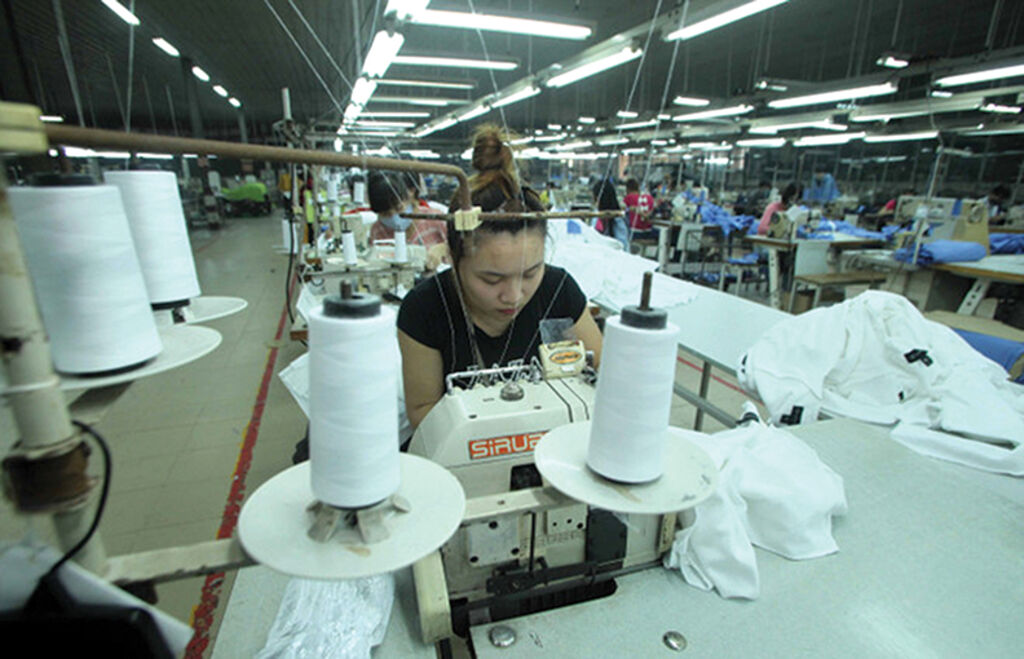 |
| Producing garment products for export at Ho Guom Garment JSC.__Photo: VNA |
Under Directive 10/CT-TTg dated March 25, the Government leader said that SMEs must be given priority to access resources for innovative startup, improvement of their competitiveness while participating in value chains, digital and green transformation, development of new business models, intensification of technology application and innovation.
Ministries and local administrations are asked to uphold the sense of responsibility, take the people and enterprises as the center, and regard difficulties facing the people and enterprises as their difficulties so as to proactively support them.
Regarding reform of administrative procedures, the premier calls for the reduction of at least 30 percent in the processing time of administrative procedures and 30 percent of compliance costs, while removing at least 30 percent of unnecessary business conditions by the end of this year.
Within this year, it is targeted that public investment capital disbursement will surpass 95 percent of the planned figures, with priority given to important and urgent projects, strategic infrastructure and regional and national connection routes, while investment projects in the 2026-30 will be prudently prepared, particularly projects involving high-speed railway infrastructure, urban railways, and international seaports.
In light of this, the Ministry of Finance is assigned to intensify lending activities of the Small and Medium Enterprise Development Fund, simplify tax-support procedures, and apply post-licensing inspection methods to ensure SMEs’ stable cash flow.
Besides, the State Bank of Vietnam will have to implement credit policies, stabilize interest rates and proactively and flexibly implement monetary policies, prioritizing production and trade, digital and green transformation and innovation.-
Education sector targets 3 million university students by 2030
By 2030, Vietnam is expected to increase the scale of higher education to over three million students, thereby achieving the target of 260 university students and 23 postgraduate students per 10,000 people.
Such is one of the salient points set forth under Prime Minister Decision 452/QD-TTg, approving the Master Plan on the network of higher education and pedagogical institutions for the 2021-30 period, with a vision toward 2050.
The Master Plan also sets a target of having 33 percent of Vietnamese citizens aged between 18 years and 22 years pursuing higher education, with no provincial-level locality falling below 15 percent.
In addition, the structure of training levels will align with the needs of the knowledge-based economy and modern industry development with the share of the master’s level training reaching 7.2 percent, doctoral training, 0.8 percent, and pedagogical training at the collegial level, 1 percent.
Besides, large and high-quality higher education institutions focusing on scientific research and technological development and innovation will be developed in the four centrally run cities of Hanoi, Da Nang, Ho Chi Minh City and Can Tho, which is expected to create a driving force for the development of key economic regions and the entire country.
As for the development of the network of higher education and pedagogical institutions, by 2030, public universities will account for around 70 percent of the national training capacity, playing a vital role in supplying highly qualified human resources to drive national development, and equitable access to higher education will be ensured for all people.
Meanwhile, private and not-for-profit private higher education institutions will account for around 30 percent of the total national training capacity, thus contributing to diversifying higher education services and flexibly meeting the needs of students and the labor market.
As for pedagogical education, it is targeted to develop a network of pedagogical institutions that can enroll a total of 180,000 to 200,000 students, including some 85 percent at the university level and 15 percent at the collegial level, with an expected number of around 50 higher education institutions.- (VLLF)









